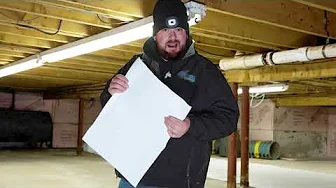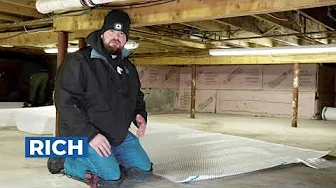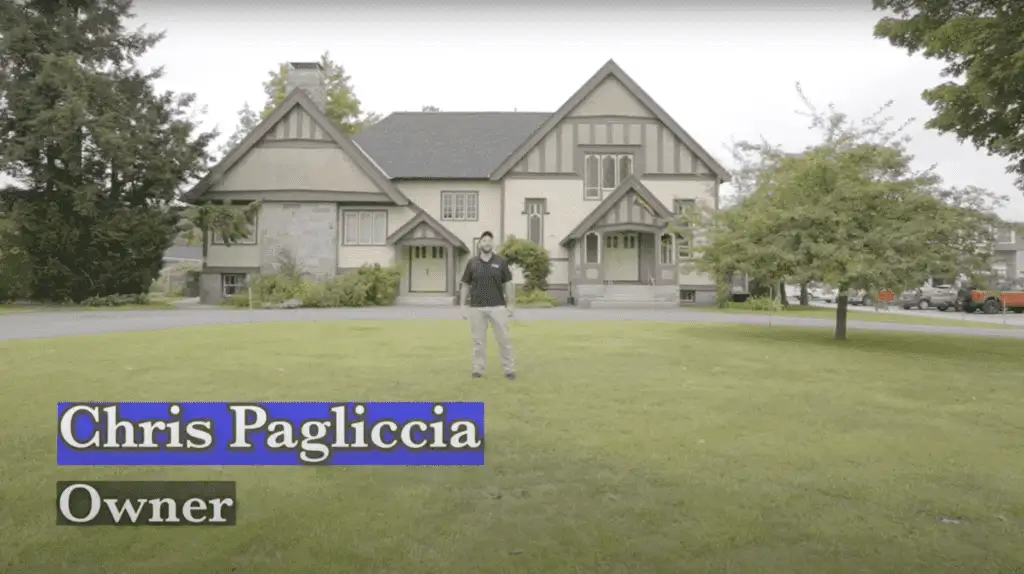Foundation Crack Repair Exeter NH
Foundation cracks are more than just an eyesore. Left unchecked, they can snowball into major structural headaches that threaten the stability of your home. In Exeter, NH, where unpredictable weather, freeze-thaw cycles, and shifting soil conditions are commonplace, foundation issues are a frequent challenge for homeowners.
A crack might start as something seemingly minor—a narrow line creeping across your basement wall—but it’s often the harbinger of larger problems lurking beneath the surface. Water intrusion, uneven settling, or even pressure from expanding soil can amplify the damage if not handled quickly and methodically. The stakes are high: foundation issues can compromise your home’s safety, drive down its value, and lead to skyrocketing repair costs if ignored.
Thankfully, addressing foundation cracks doesn’t have to be a stressful ordeal. Tackling the problem early, armed with the right information, can save you time, money, and future headaches. This article dives into the key signs to watch for, the common causes behind foundation cracks, and the available repair options so you can keep things solid—literally. If you’re navigating foundation challenges in Exeter, you’re not alone—but knowledge is your best tool.
Real People - Real Great Results
Crawl Space Video Playlist
Signs of Foundation Cracks to Watch For
Foundation issues tend to sneak up on homeowners, often starting small but escalating quickly if ignored. Knowing what to look for can save you the headache—and expense—of dealing with major structural damage. Here’s what should raise a red flag:
- Visible Cracks on Walls or Floors: The most obvious sign, these can appear as jagged lines running vertically, horizontally, or diagonally. Pay close attention to spots around windows, corners, and door frames where stress is more likely to manifest.
- Water Leaks: Any unexplained moisture, damp spots, or puddles near cracks in your basement is a dead giveaway. This is especially common after heavy rain or snowmelt in Exeter’s variable climate.
- Sticking Doors and Windows: If your doors or windows suddenly seem misaligned, refuse to open or close properly, or seem to catch on their frames, it might not be them—it might be your foundation shifting.
- Uneven Floors: A warped or sloping floor can feel subtle at first, but it’s often an underlying symptom of foundation problems. Place a ball or marble on a suspected area to see if it rolls consistently in one direction.
These aren’t one-off nuisances—they’re the early warning signs of trouble that should spur you into action. A visual check every few months can mean the difference between a quick fix and a costly overhaul. Get in the habit of scanning your basement and home exterior, especially after major seasonal weather swings. Those cracks won’t heal themselves.
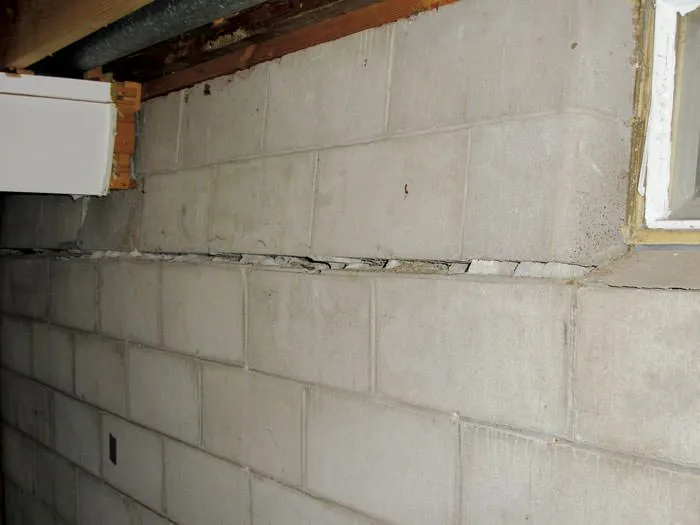
Common Causes of Foundation Cracks
Foundation cracks don’t just show up out of nowhere; they’re often the result of very specific forces acting on your home. Ignoring these underlying causes can make repair efforts a temporary fix rather than a long-term solution. Here are the most common culprits:
- Soil Movement: Soil is rarely as stable as it looks. In Exeter, NH, the combination of clay-heavy soil and seasonal changes can cause expansion and contraction beneath your foundation. This constant shifting creates stress cracks over time. Think of it like bending a paperclip over and over—it only holds its shape for so long before it snaps.
- Freeze-Thaw Cycles: New Hampshire winters are no joke. When water trapped in the ground freezes, it expands, putting immense pressure on your foundation. Then, when it thaws, the ground relaxes. This freeze-thaw cycle can act like nature’s slow-motion jackhammer, gradually wearing down the integrity of your home’s concrete base.
- Poor Drainage: If water is pooling near your foundation, you’ve got a recipe for trouble. Excess moisture seeps into the concrete and weakens it. Over time, this constant exposure to water—even in small amounts—encourages cracks to form. A bad drainage system is like leaving a leaky faucet dripping over the same spot for years; eventually, something gives.
- Tree Roots: Those tall, stately trees in your yard may feel like part of the family, but their roots can wreak havoc on your foundation. As roots grow and extend underground, they can exert force against your foundation walls or weaken the soil holding it in place. This is especially true for trees planted too close to your home.
Understanding these causes isn’t just about fixing what’s already broken. It’s about ensuring you tackle the problem at its source, so cracks don’t come back like an unwanted sequel. Sometimes, the soil needs stabilization, drainage systems need rerouting, or nearby trees need removal to truly safeguard your foundation.
Types of Foundation Cracks
Not all foundation cracks are created equal. Some are cosmetic nuisances, while others are red flags waving for immediate attention. Here’s a breakdown of the most common types:
- Vertical Cracks: These run straight up and down and are usually caused by concrete shrinkage during curing. While they’re often less severe, they still warrant action to prevent water intrusion and avoid worsening over time. Left unchecked, even “minor” vertical cracks can expand under the strain of New England’s shifting seasons.
- Horizontal Cracks: These are the troublemakers. Horizontal cracks generally signal excessive pressure from the outside—be it saturated soil, hydrostatic pressure, or frost heaves. If water pooling against your foundation or shifting soil is the culprit, don’t procrastinate. Horizontal cracks weaken the foundation’s structural integrity and require urgent professional intervention.
- Diagonal Cracks: Picture these as a compromise—less alarming than horizontal cracks, but symptomatic of uneven foundation settling. These cracks often form from soil movement or poor drainage around your home. The angle might scream “gravity at work,” but their very existence whispers “foundation stress.” You’ll want an expert to assess and address the root cause.
- Hairline Cracks: These are the tiny fissures that might provoke a shrug but are worth keeping an eye on. Typically a result of normal concrete curing, hairline cracks are often harmless—until they’re not. Changes in length, width, or moisture presence can signal evolving foundation issues, so monitoring is key.
Each crack tells a story about your home’s current—and future—structural stability. The sooner you classify and address the issue, the better your chances of preventing bigger, more expensive problems.
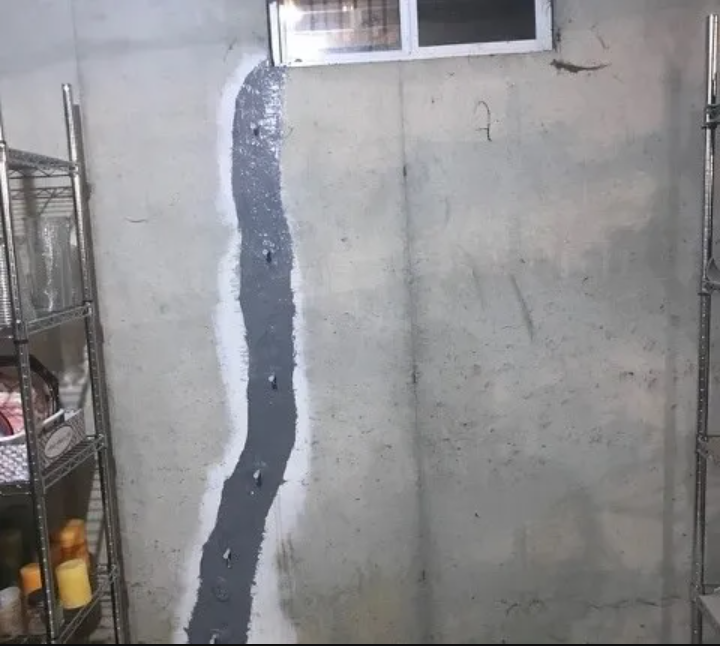
In most cases, mix-and-match solutions work best. Repairing a crack but ignoring the cause (like bad drainage) is inviting the issue back for a second round. And for anything beyond a hairline crack? Leave it to the pros. They’ve got the know-how, the tools, and the elbow grease to turn potential disaster into a non-issue.
Methods of Foundation Crack Repair
Foundation cracks don’t play by the same rules. Some are mere surface scuffs, while others are red flags screaming for immediate attention. Knowing how to deal with each is vital to keeping your home standing tall. Here’s a no-nonsense breakdown of common repair methods—and when to use them.
- Epoxy Injection: This is the go-to for small, straightforward cracks, especially vertical ones. It’s like superglue for concrete, filling the crack and bonding the structure back together. Bonus: it’s waterproof. But don’t kid yourself—this isn’t for structural or shifting issues; it’s for stopping leaks and stabilizing minor damage.
- Polyurethane Foam Injection: Think of it as epoxy’s more flexible sibling. Instead of hardening, this stuff expands and moves with your foundation, making it ideal for areas with soil that swells and shifts seasonally (looking at you, New England winters). Good for sealing minor leaks and gaps, but again, don’t expect miracles with serious structural problems.
- Carbon Fiber Straps: If horizontal cracks have decided to show up, your foundation needs some muscle. Enter carbon fiber straps—thin, strong reinforcements that anchor to the wall and prevent further bowing or movement. They’re a no-mess, no-excuse solution for stopping things from getting worse.
- Foundation Underpinning: When the cracks aren’t just cracks but signs of your home playing a slow game of sink-or-shift, it’s time to bring out the big guns. Underpinning involves installing piers beneath your foundation to lift and stabilize it—engineering-grade security for the doomsday scenarios of foundation repair. Costs more but worth every penny when the stakes are this high.
- Grading and Drainage Fixes: Sometimes the problem isn’t your foundation—it’s what’s happening around it. Poor water drainage leads to hydrostatic pressure, which is a fancy way of saying “water’s pushing on your walls.” Regrading your yard, extending downspouts, or installing a French drain system can be game-changers, keeping soil stable and your foundation dry.
Cost Considerations for Foundation Crack Repair
Foundation crack repair can vary wildly in price, so it’s important to understand the factors influencing your final bill. In Exeter, NH, the unique climate and soil conditions can also add variables to the mix. Here’s a no-fluff breakdown of what you might expect to spend:
- Epoxy or Polyurethane Injection: Relatively affordable at $300–$800 per crack, making this a popular choice for minor to medium-sized cracks. It’s a good middle ground for homeowners who want both durability and a watertight seal without breaking the bank.
- Carbon Fiber Straps: Used to repair horizontal crack issues, this method will run you $1,000–$2,500 per wall. It’s on the pricier side but provides permanent reinforcement, so you’re paying for peace of mind.
- Foundation Underpinning: For serious structural problems, underpinning is the nuclear option. Depending on the severity of the damage, costs range from $5,000 to $15,000 or more. If your foundation is literally sinking, though, this is non-negotiable.
- Drainage System Installation: Poor water management can wreak havoc on your foundation, so installing perimeter drains, French drains, or improved grading might cost $1,500–$7,500 or more. It’s not direct crack repair, but it’s critical for preventing future issues.
Pro Tip: Time is money when it comes to foundation cracks. The longer you wait, the worse a minor issue can become—transforming a $500 repair into a $5,000 ordeal. The takeaway? Nip it in the bud.
Finally, don’t skimp on professional evaluations. Yes, hiring a foundation expert might feel like one more expense upfront, but their advice can ensure you’re spending wisely. The cost of misjudging the issue? Priceless.
Preventative Measures to Protect Your Foundation
While foundation repair can fix existing cracks, prevention is the most cost-effective and stress-free strategy. A little vigilance in maintaining your home’s foundation can save you thousands in repairs and help you avoid the headache of structural damage. Here’s how to stay ahead of the problem:
- Direct Water Away: Water is one of the main culprits behind foundation damage. Make sure your gutters are clean, your downspouts extend at least 6 feet away from your home, and any nearby landscaping slopes away from the foundation. Standing water after rain? That’s an invitation for trouble. Fix it.
- Monitor Trees: Trees are great for shade but a nightmare for foundations if they’re too close. Their roots can stretch out deceptively far, putting pressure on your foundation and even causing cracks. If you’ve got overgrown giants next to your home, it might be time to consult an arborist or remove them entirely.
- Maintain Consistent Moisture Levels: The New England weather doesn’t make this easy—soils expand when wet and shrink when dry. This movement stresses the foundation over time. A simple fix? Use soaker hoses during droughts to keep the soil evenly moist and prevent it from pulling away from the foundation.
- Regular Inspections: Treat crack detection like a routine oil change for your car—something to do on a schedule. Walk around the house every few months, checking walls, floors, and the exterior for signs of trouble. Early detection means cheaper and simpler fixes.
Consistent upkeep isn’t glamorous, but this no-nonsense approach will save you massive headaches (and dollars) down the line. Keeping water at bay, managing vegetation, and staying alert to changes in your home’s structure are your best bets for a crack-free foundation. Prevention is a lot easier—and spartan—than scrambling to fix avoidable damage later.
When to DIY and When To Call a Professional
Here’s the rule of thumb: if it’s small, stable, and superficial, grab a DIY kit. If it’s large, growing, or looks like it belongs in a horror movie, call the pros.
Let’s break it down. Got a hairline crack less than 1/8 inch wide that’s been sitting there quietly for years? Chances are it’s harmless shrinkage from when the concrete cured. You can fix this with a $50–$100 epoxy or polyurethane injection kit from your local hardware store. Just clean the crack, follow the instructions, and pat yourself on the back. No big deal.
But the moment things get sketchy—horizontal cracks, cracks wider than 1/8 inch, or walls bowing in like they’ve seen better days—that’s not a weekend-warrior situation. Those signs often indicate pressure from external forces, like expanding soil or water buildup, or even a sinking foundation. If you spot these, step away from the hardware aisle and call someone with more training than a YouTube video.
Here’s the thing: professionals have access to industrial-strength materials, advanced diagnostic tools, and most importantly, experience. They know what to look for and how to fix it properly. Trying to tackle major structural repairs on your own isn’t just a gamble—it’s potentially dangerous. Plus, a bad DIY job could make things worse (and pricier) in the long run.
When in doubt, spend the extra cash for informed advice. Many contractors in Exeter, NH, offer free or low-cost inspections. What they can tell you in an hour could save you weeks of stress and a mountain of regret. Bottom line? DIY when it’s simple, delegate when it’s serious.

Conclusion
Foundation crack repair in Exeter, NH, isn’t just about patching concrete—it’s about safeguarding your home’s core stability. Cracks, whether small or severe, are a warning sign that shouldn’t be ignored. In a region like Exeter, where harsh winters and soil fluctuations take a toll on structures, proactive maintenance can make all the difference. By staying vigilant, knowing the key signs of trouble, and acting promptly, you can avoid spiraling costs and larger structural issues down the road. For smaller, manageable cracks, DIY solutions can sometimes suffice, but for anything beyond surface-level damage, a professional is your best ally. A strong foundation equals a durable home—a principle worth prioritizing. Repair the cracks. Solve the root causes. Protect your investment. It’s that simple.
Reviews from Happy Customers
Our top priority is customer satisfaction, and we work closely with clients to understand their unique needs and goals.




